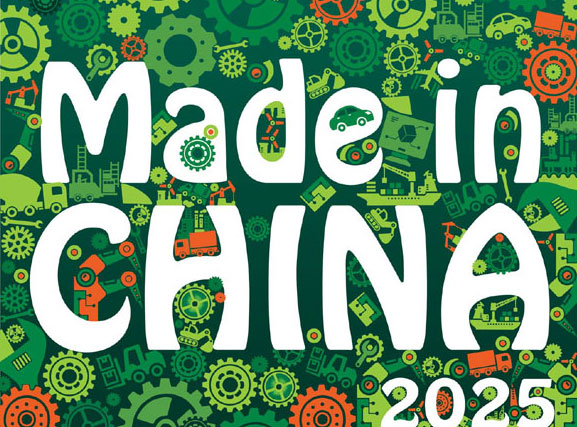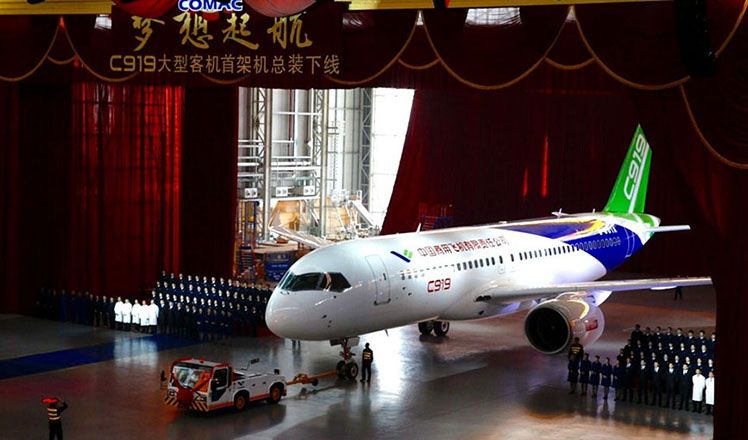After decades of innovation catch-up, China moves to the fore
Updated: 2015-12-22 20:33
(Xinhua)
|
|||||||||||
BEIJING - In the Pingshan industrial zone in south China's Shenzhen City, BYD's hexagonal museum is a must-see for more than architectural reasons, as it charts the company's path from workshop to world-beater.
From batteries through computers to electric vehicles, BYD's progress in only two decades is nothing short of phenomenal. Today, one in every 10 new energy passenger vehicles sold worldwide is made by BYD.
It was innovation that took BYD to the status it enjoys today: the Chinese auto-maker with the most patents, across many industries.
About 800 km north of Shenzhen, a low-speed maglev train links downtown Changsha to the airport. Test operations begin at the end of this month. Intellectual property rights generated by the project are all Chinese.
The train was created by Zhuzhou Electric Locomotive, a subsidiary of rolling-stock giant CRRC, the company whose high-speed trains link almost all parts of China and are beginning to connect the world.
In North China's port of Tianjin, Tianjin Motor Dies, a leading motor dies producer in the world, is no longer waiting for orders or design papers, but is evaluating vehicle appearance design and helping car makers improve their ideas.
Innovation is nothing new in China, but now it is the center of considerable government attention. In late October, the Communist Party of China made innovation one of five key concepts in the 2016 to 2020 five-year plan.
China's decades of rapid growth were driven mostly by foreign technology and imported practices along with domestic advantages in labor costs, but now China's home-grown technology is starting to catch up with developed countries'.
Hu Angang, director of the center for China studies at Tsinghua University, believes that world economic history shows two patterns of development: pursuer-style, featuring high growth with borrowed technology; and innovative-style, with reduced growth, but greater contributions to mankind's knowledge base.
"China is transforming from pursuer to innovator, like the United States in the early 20th century," Hu said, adding that only the United States had successfully completed the transformation.
China is quickly catching up. In 2008, the first high-speed railway linked Beijing with Shanghai. Seven years later the country has more than 17,000 km of high-speed track.
In 1995, the United States had 1,750 times more internet users than China. In a reversal of fortune, China now has twice as many as the United States; remarkable progress by any standard.
Companies such as Huawei, Lenovo and Alibaba are becoming household names the world over, and it is mostly down to home-grown innovation.
Less than 10 years since its founding, drone-maker DJI meets about 70 percent of world civilian demand with a market value around 10 billion U.S. dollars.
"Our innovation comes from our personnel," said vice president Oliver Wang. About 40 percent of DJI staff work in R&D. The company is ready to open an R&D center in Palo Alto, California and looking forward to the time when people from all industries find uses for unmanned aerial vehicles in their work. After the catastrophic Nepal earthquake in April, DJI drones were used to map the disaster area, helping rescue and reconstruction work.
Innovation is being supported by governments at all levels. DJI's home in Nanshan District of Shenzhen is also the site of the headquarters of some of most trendy companies in China like ZTE, Tencent and software producer Kingdee.
In 2015 the R&D/GDP ratio in Nanshan is expected to hit 6 percent, 3.7 percentage point higher than that of the country as a whole and over 1 percentage point higher than that of Israel, which tops the world in the ratio. In the past eight years the district has provided technology startups with lending facilities of 4 billion yuan at a cost of only 200 million.
China still lags behind in many sectors, such as basic science, new materials and major equipment manufacturing industries, but Mark Bartlam of Nankai University, Tianjin, is optimistic.
"Innovation cannot be planned, expected or taught. It will take time and it will come sooner or later," the British biochemist said, adding that China has already has conditions for major breakthroughs, including talented students, high-quality and hardworking scientists, and unprecedented policy support.
"Pursuing," Hu Angang said, "is eye-catching, but innovation is sustainable when focused on quality and efficiency. The transformation of a 10-trillion-dollar plus economy will be a great contribution to the world."
Related Stories
China to continue innovation-driven development strategy 2015-12-21 20:58
Modern school system crucial for innovation 2015-12-19 08:09
WIC sees the innovation of Chinese Internet companies 2015-12-18 20:44
China focuses on innovation to boost economy amid global innovation trend 2015-12-18 10:37
Today's Top News
Germany is AIIB's largest non-regional shareholder
Spanish PM to form new govt after elections
Two-child policy expected to be approved
IMF head ordered to face trial over Tapie affair
China, Russia sign over 30 deals on Medvedev visit
Xi calls for shared future in cyberspace
China successfully launches its first dark matter satellite
China becomes shareholder in European bank
Hot Topics
Lunar probe , China growth forecasts, Emission rules get tougher, China seen through 'colored lens', International board,
Editor's Picks

|

|

|

|

|

|






